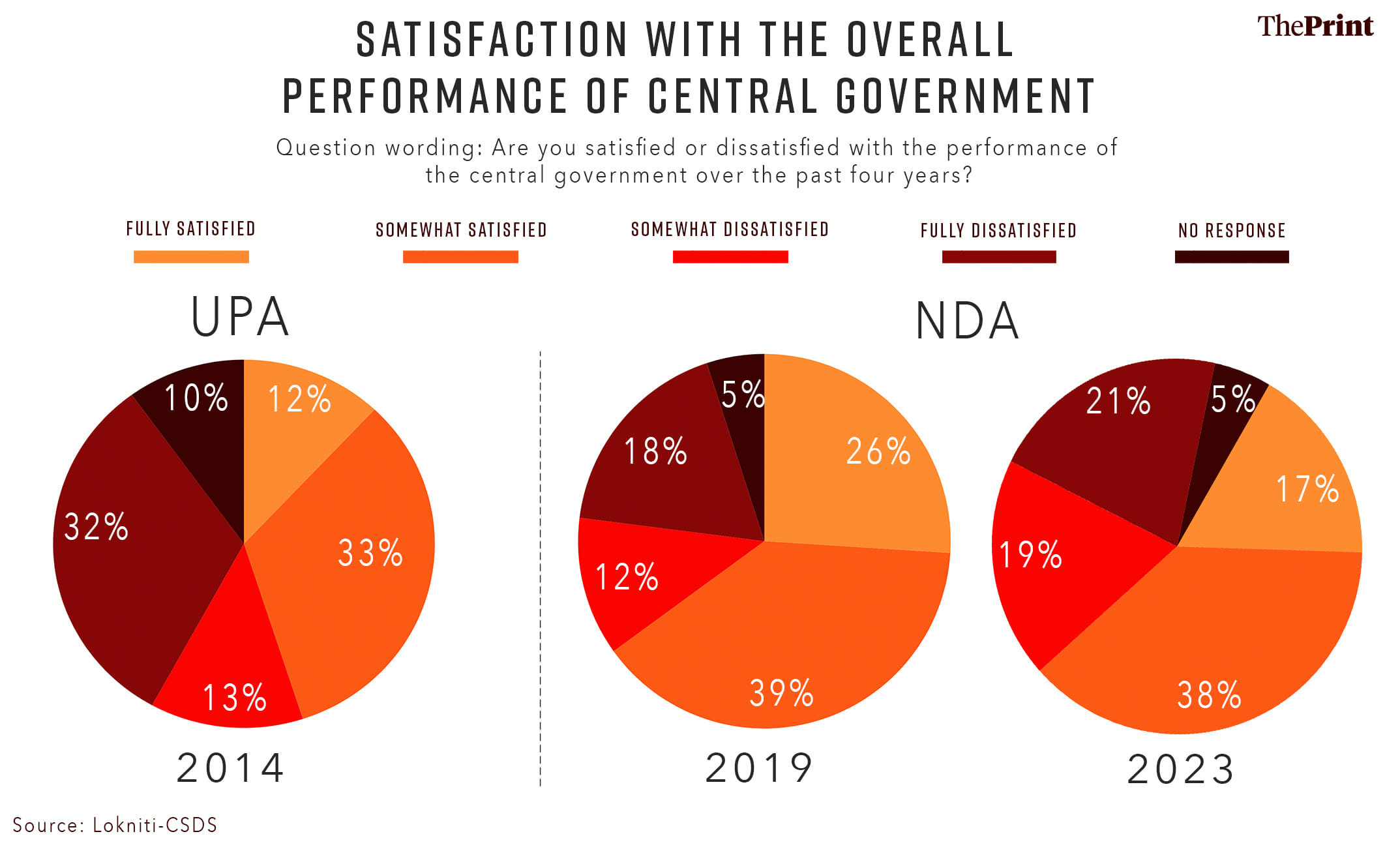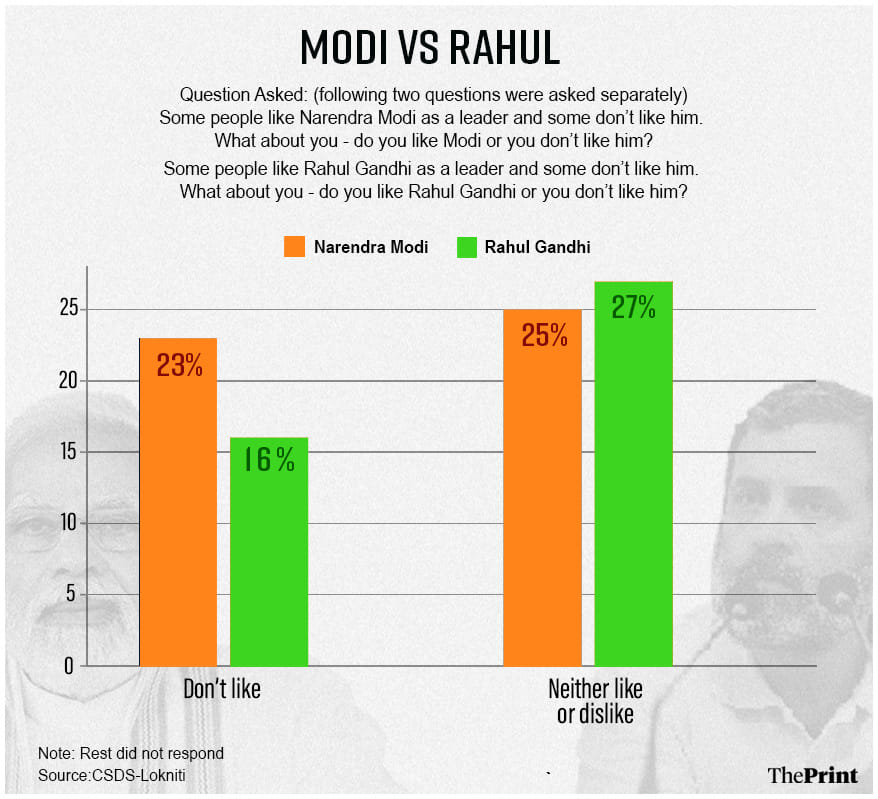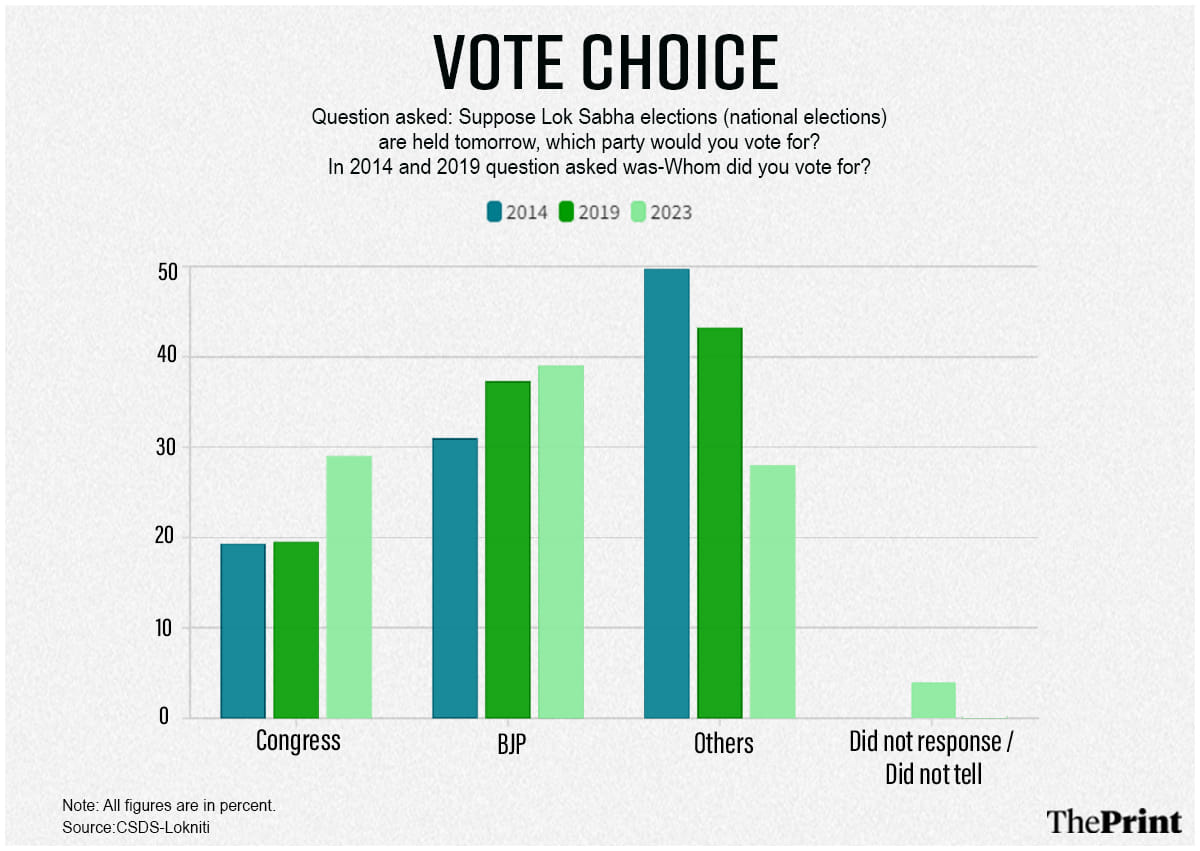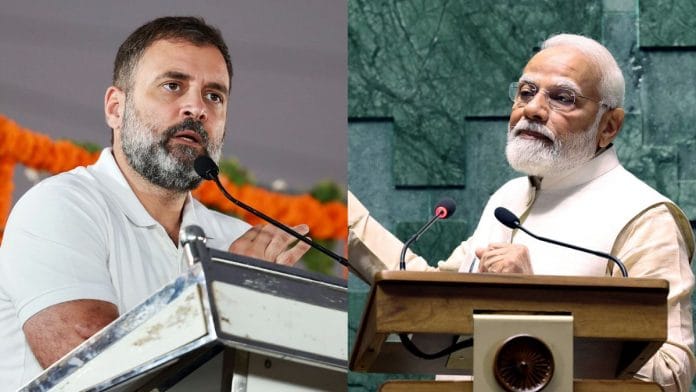As the 2024 Lok Sabha election draws closer, the million-rupee question for those interested in public affairs is whether India’s politics will change in 2024. To be honest, this is a premature question and any answer given today will be contingent on many factors that might intervene in the coming eleven months. Yet, we can still stick our neck out and present some indications about what is not changing and what has already changed so far, to allow the reader to surmise what is likely to change.
Modi wave steady
It won’t be an exaggeration to describe the last ten years as the Modi era of Indian politics. His popularity was instrumental in bringing the BJP-led NDA government to power with a clear majority in 2014 and then getting it re-elected in 2019. That ‘Modi factor’ seems to be the constant—but at a point of stagnation. Four of every ten respondents ‘like’ Modi and a slightly higher proportion look forward to having him as the PM again—though, this has not changed much since 2019; in fact, there is a very slight decline (Graph 1).

Above all, his speeches mesmerise the voters and attract them to him, though there are many other reasons too (Graph 2). Consequently, the other constant is the possibility that a plurality of voters may vote for the BJP in 2024. Our survey indicates that the BJP will hold on to its 2019 vote share and even add a small bit, ‘if elections were held tomorrow’ (Graph 6).

Also Read: BJP is planning its roadmap for 2024, even 2029. The opposition is still stuck in 2018
Air of dissatisfaction
But underneath this continuity of the politics of the past decade, there lies a very interesting ‘change of mood’. Any interpretation of either the continuity or the change will have to reconcile the different directions of these two tendencies. While more respondents appear satisfied with the Modi government than those who are dissatisfied, a careful reading of the data suggests that for the first time in Modi’s tenure, the proportion of ‘fully satisfied’ has gone down steeply and that of the dissatisfied has increased from 30 per cent in 2019 to 40 per cent today (Graph 3). In fact, except on the issue of developmental work (understood also as infrastructure work), respondents are less happy today about the handling of most other issues, whether it is economic, social, or policy related (Graph 4).

Rise of Rahul Gandhi
Corresponding with this overall disappointment, the other change is in the realm of alternative leadership and political choices. Rahul Gandhi’s acceptability as prime minister has almost doubled since 2014 (Graph 1), although the increase since 2019 is rather limited. Moreover, a quarter of the respondents said that they always liked Rahul, while another 15 per cent are a recent addition thanks mainly to the Bharat Jodo Yatra. More interestingly, more than half of this addition comes from non-Congress voters. Whether they will turn to the Congress as their preferred party will make a lot of difference.

Most critically, Modi continues to be a polarising factor: while a quarter of the respondents neither like nor dislike both Modi and Rahul Gandhi, almost a quarter (23 per cent) ‘don’t like’ Modi whereas 16 per cent ‘don’t like’ Rahul Gandhi (Graph 5). As many as one in every three persons believes Rahul Gandhi to be the challenger to Modi.

Also Read: Why BJP has much to look forward to in 2024, despite Karnataka assembly election loss
Congress gains, but at whose cost?
With these changes in the public mood, one would naturally expect a change in the possible configuration of political choices. But as we have seen above, the BJP is not losing its vote share, yet. What is happening though, is that the Congress is adding to its vote share: from a stagnant vote share of under 20 per cent in the last two elections, the survey indicates that there is a decent increase in the proportion of respondents willing to vote for the congress ‘if elections were held tomorrow’. The catch is that this addition appears to be mainly coming at the cost of ‘other’ parties rather than the BJP (Graph 6). This will have implications for a possible non-BJP alliance as well as the capacity of the Congress to defeat the BJP in bipolar contests.

Needless to say, this is what the voters think today—almost a year ahead of the election. Politics is notorious for the ‘X’ factor and the unfolding politics in the coming year will be the unfolding of many of such ‘X’ factors. The survey, for instance, indicates the rise of Delhi CM Arvind Kejriwal as an important challenger to Modi (next to Rahul Gandhi, with 11 per cent mentioning him). But more than that, the survey throws up another possibility — in the absence of Modi (if he chooses not to contest), almost one in every five respondents identify Uttar Pradesh CM Adityanath as a possible alternative.
Barring these unknowns, the public mood seems poised with a delicate dilemma: the attraction of ‘Modi’ the leader, accompanied by a disappointment with the ‘Modi government’. How this dilemma will play out may decide the course of politics in the coming days and months.
Suhas Palshikar taught political science and is chief editor of Studies in Indian Politics. Sandeep Shastri is the director – Academics, NITTE Education Trust and National Coordinator, Lokniti. Sanjay Kumar is a professor and co-director Lokniti-CSDS. Vibha Attri is a research associate, Lokniti-CSDS. Views are personal.
(Edited by Theres Sudeep)






